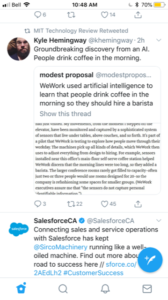The M&A frenzy cycle that we have been discussing on and off for the past year hasn’t really died down, and this has spurred the PE cycle where PE (Private Equity) firms, wanting to capitalize on the frenzy around the Procurement space, are buying (majority investments in) vendors (that appear) ripe for a turn-around or market growth with just a little boost to their platform.
By investing in the right platforms, PE forms are looking to acquire vendors that they can flip (public or private to a bigger PE firm or bigger software vendor) before the M&A frenzy dies down. But just buying any old firm — regardless of how good the turn-around opportunity looks, how good the base technology platform is, or how much the vendor’s platform can be improved with additional investment or roll-up acquisitions — isn’t the answer.
Nor should the vendor follow the same rules that companies should follow when doing M&A. What should a P&E firm look for?
Operations
The firm should either have an efficient operational model or the P&E firm should be able to make the model efficient. If overheads are too high, there should be a way to bring them down quickly — either through new leasing arrangements, new (data center) hosting arrangements, cheaper back-office support operations (using PE personnel or outsourced providers for non-critical operations, etc.).
Talent
Whether the goal is a turn-around, an improved platform, or just taking the platform to a wider market, that’s going to take talent. The majority of the core talent that built the solution and the core talent that can take it to market, sell it, and implement it should still be at the company. Otherwise, it might be a better investment to build something from scratch.
Portfolio Synergy
Whether it’s turnaround or a growth strategy through an improved platform, there typically needs to be results within a few years. The best way to make this happen is if the solution has synergy with the customer base in the rest of the portfolio. For example, if the solution being considered is an indirect sourcing platform but most of the customers in the PE firms stable of companies are direct sourcing manufacturers, the PE firm will have zero advantage in trying to take the solution to market.
Just like M&A vendors should not pursue mergers or acquisitions that get synergy from redundancy, PE firms should not pursue acquisitions that just look cost effective. Only those investments in firms with solid platforms, good talent, efficient operations, and and an attractiveness to the markets they know are worthwhile, as those are the only companies with near-term growth potential — and the only companies the market will want to consider.
Hopefully PE firms will take this advice and save/grow those companies that will help the market as a whole. Only time will tell.

